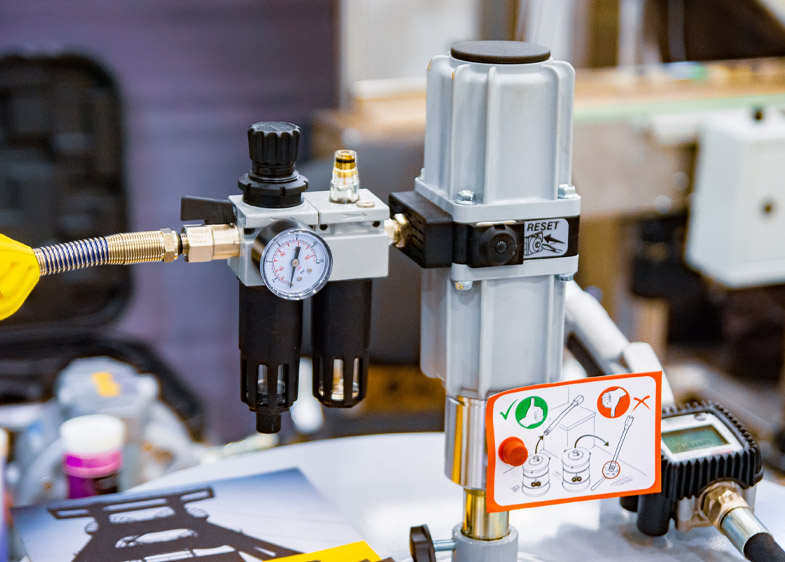Air tools vs Electric tools: Finding The Best Option For You
/ 2
When it comes to choosing the right tool for the job, one of the biggest decisions you’ll face is whether to go with pneumatic or electric tools. Both have their own strengths, limitations and applications and the choiceof air tools vs electric tools often comes down to the type of work you’re doing and what setup you already have in place.
Here we break down the key differences between air and electric tools covering everything from power and performance to portability, cost and safety.
Air tools vs Electric tools
Air tools are powered by compressed air from a compressor meaning they can run continuously without losing power or performance as long as the compressor is running.
They also often have high torque and fast response, especially impact wrenches, grinders and drills. This makes pneumatic options excellent for heavy duty, industrial or repetitive tasks that require consistent performance.
Electric tools are powered either by being plugged into mains power or running on rechargeable batteries. Modern electric tools with brushless motors can rival pneumatic torque, but usually only for shorter bursts.
In rechargeable battery powered options, the power source can degrade and drain over time, meaning performance drops as charge runs low providing a less consistent experience compared to air tools.
Weight and Size
Air tools are often lighter and more compact as they don’t need built in motors to run but as an air compressor is needed to power the device, the whole setup can take up more space.
Electric tools tend to be heavier due to internal batteries or motors, often getting bulky with high capacity battery options.
Noise
Pneumatic tools on their own can be loud (like most power tools), but the requirement of an air compressor adds to the overall noise often making them louder than electric options.
Electric or battery options are generally quieter without the additional requirement of an air compressor, however, some high powered options are still significantly loud when in use.
Portability
Air powered tools have the additional need of an air compressor and hose system making them less mobile in certain circumstances and making them better suited for workshops or fixed sites.
Between battery powered and electric tool options, battery tools are extremely portable making them ideal for fieldwork, rooftops, remote sites or when moving between jobs. However, mains powered electric tools are limited to areas where a power source is available.
Maintenance
Pneumatic tools require clean, dry, lubricated air meaning filters, dryers and oilers in air compressor systems need regular maintenance checks to ensure smooth operation, often adding extra steps to the upkeep of the tools.
Battery powered tools mainly need maintenance for the batteries themselves, such as charging cycles or replacements over time, meaning they require less frequent maintenance than air setups.
Cost
Pneumatic tools themselves are often cheaper than electric options, but they also require the additional air compressor system to operate. This means if you don’t already have a pneumatic system in place, the initial cost can be higher.
In the long-term, air tools are more economical; especially in workshops where multiple pneumatic tools can share one compressor.
Electric tools are usually more expensive upfront and frequently need part replacements such as batteries that wear down over time and need to be replaced every few years.
However, they don’t have extra setup requirements like air systems that need a compressor, meaning short-term electric options may end up being cheaper, especially for those needing a brand new tool setup and may not have a compressor on hand.
Safety
Pneumatic tools tend to be a safer option in hazardous or explosive environments due to the reduced likelihood of sparking.
On the other hand, electric tools are more likely to overheat, spark or increase the risk of fire if damaged, making them less suited for dangerous environments.
Best suited for…
Air powered tools
- Workshops, garages, production lines
- Heavy-duty tasks where continuous use is needed
- Environments where the risk of tools sparking is dangerous
Electric tools
- Mobile work or remote jobs
- Occasional or general-purpose use
- DIY
- Construction sites
In short, air tools offer a better power to weight ratio, often being more efficient for heavy-duty tasks where continuous use is needed, but they require a compressor and airline to power them, limiting their portability, increasing setup costs and requiring more maintenance.
Electric tools are more convenient for DIY and portable tasks as they are powered independently via batteries or mains power. However, they can lack power, torque and durability for professional heavy-duty use and tend to require more frequent part replacements (such as batteries as they wear down).
If you’re ready to explore high quality air tools that deliver consistency, power and reliability, take a look at what Fluid Power Services can offer today.


